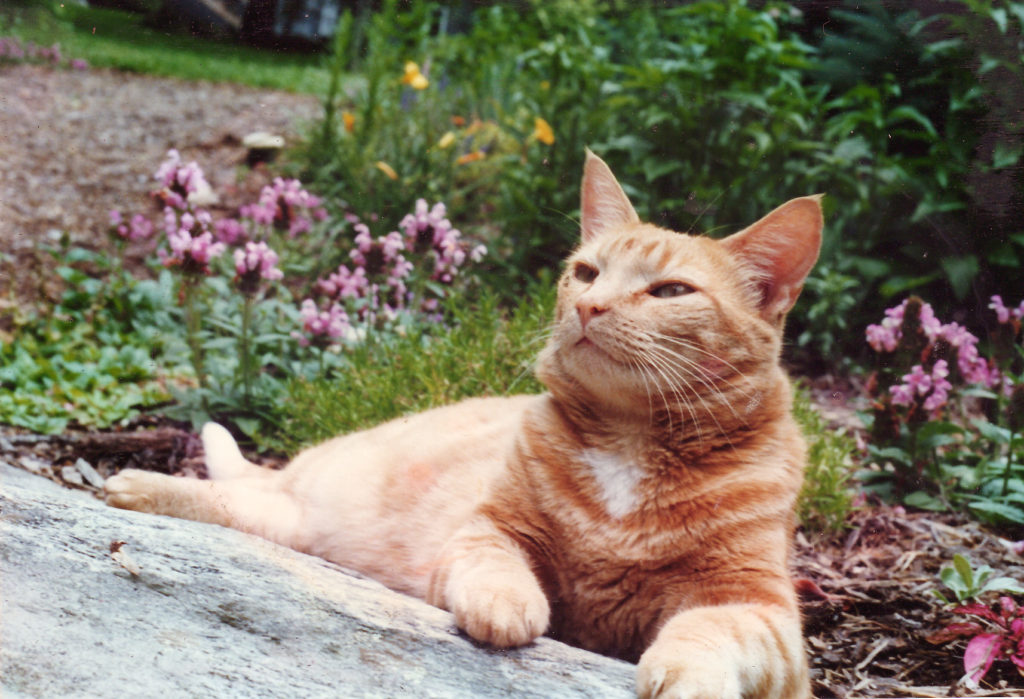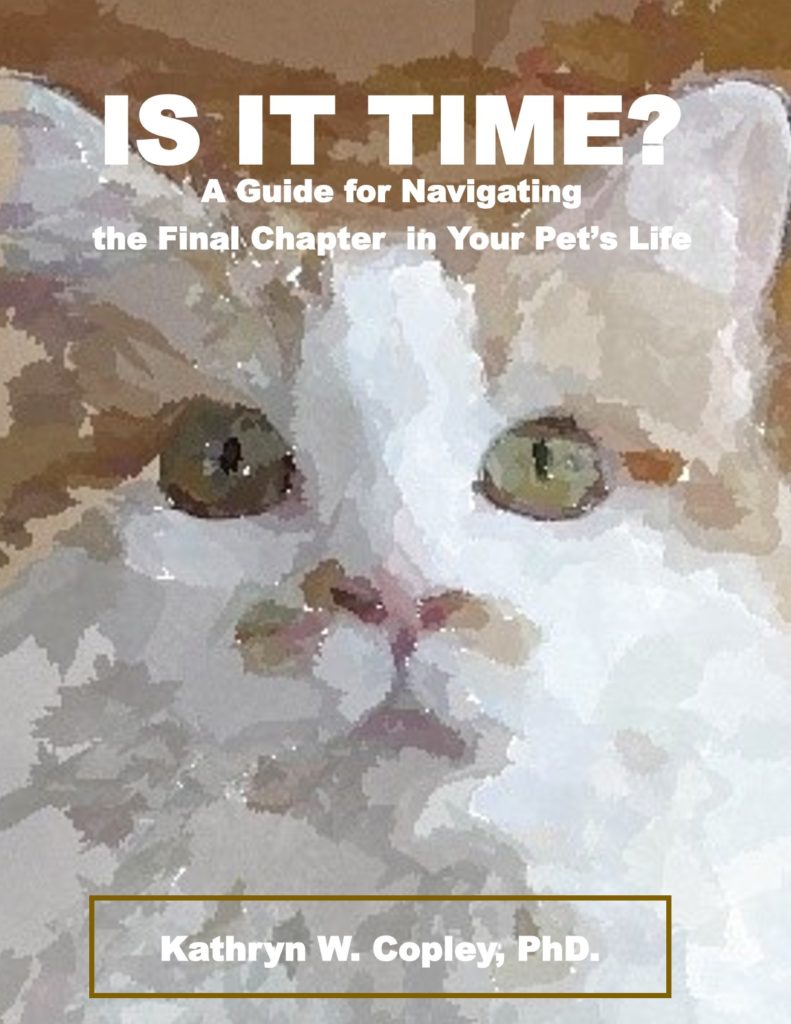
My easiest “hello.” My hardest “goodbye.”
“How lucky I am to have something that makes saying goodbye so hard.” – Winnie The Pooh
STAGES, PHASES, TASKS OF GRIEVING
The most well-known taxonomy of grief may be Elisabeth Kubler-Ross’ five stages described in On Death and Dying (1969): denial, anger, bargaining, depression, acceptance. They are often interpreted as stages to be experienced in the order stated, the first of which must be “completed” before moving to the next stage.
Actually, she was describing “tasks” that the griever encounters in any order, and the model may or may not describe your grief process. This and subsequent models were developed to describe the death of and grief for humans, but grief is grief is grief.
J. William Worden described four tasks of mourning:
- Accept the reality of the loss
- Work through the pain of grief
- Adjust to an environment in which the deceased is missing
- Find an enduring connection with the deceased while embarking on a new life.
“When you are sorrowful look again in your heart, and you shall see that in truth you are weeping for that which has been your delight.” – Khalil Gibran
Providing guidance about grief surrounding a pet’s death is tricky because two contradictory things are true at once:
- there is no “right” intensity or duration of your grief for your pet,
- yet grief that interferes with daily living shouldn’t be ignored.
If you feel stuck, it may be that you are grieving for more than the loss of your pet. If you – or a family member or friend – feel debilitated by the loss of a pet to the extent that it interferes with daily living, it may be time to think about talking to a trained therapist.
If you or someone you’re concerned about is having thoughts of self-harm or harming others, seek professional help, which may include The National Suicide Prevention Lifeline — 800-273-8255 (TALK).
Much of what is written here assumes profound grief. But maybe that isn’t you. You miss Buddy and think of him fondly, but his absence doesn’t consume your thoughts or interfere with the tasks of your life. There’s nothing wrong with that. Grief isn’t a contest.
Click here for when – if ever– it is time to get a new pet.
GRIEVING
You may begin to experience grief the moment you learn that your pet’s condition is potentially life-threatening. This anticipatory grief shares many features of the grief that follows a loss – physical pain, emotional distress, difficulty processing information,….
Grief doesn’t have a timetable
There is no “normal” amount of time to grieve. Grief isn’t something you get over; it is something you move through. Intensity and longevity of the grief vary widely, depending on such things as whether your pet loss was sudden or long-anticipated, whether you provided a long or short period of care, your spiritual beliefs, and your support network.
What to do
American society isn’t very good at dealing with death, much less with grief and grieving, with grievers expected to be back to their life or job in days.
Give yourself permission to grieve, to feel what you feel. You have a special bond with your pet. It has been with you through times of celebration and loss. It has loved you unconditionally. Society has rituals that acknowledge the grief we feel at the loss of the people in our lives, but there will be people in your life – and maybe even you – who say, “Fluffy is just a cat. You can get another one.”
You may ask yourself, “Why is this so hard?” Yes, Fluffy is a pet, not a family member. But grief is grief is grief. For many people, the grief of losing a pet is greater than the grief of losing a human loved one.
Recognize that it is normal to wish you had done more, to question whether you explored all the options and made the right decisions. Remind yourself that you did what you thought was right at the time, and that you made those decisions with love. Pet Loss Help writes:
“The most difficult guilt may follow the excruciating decision to euthanize, even when there is no other humane option! Even those who devoted all to their animal’s life and health can experience devastating guilt. We ruminate about our failures to be the perfect steward, conduct a harsh retrospective of our worthiness to have such a devoted companion and find ourselves lacking.” (We do this when we could and should be) “remembering all we contributed in love and quality to our friend’s life….”
Click here for more about dealing with guilt.
Release your feelings. Surround yourself with people who understand your loss (maybe others who have also lost a pet), with whom you can talk without fear of judgment. Share happy stories, of course, but also talk about the end if it feels right.
Let your friends help. They don’t want to see you hurting, but they may not know what to do. Their attempts to help may be clumsy. Accept even a clumsy effort for what it is – an attempt to carry some of your pain. If you live alone, the loss of your pet can leave you incredibly lonely. Friends may reach out to you, but you may have to reach out to them as well.
Seek support from your Higher Power.
If you find it difficult to talk about your feelings, consider journaling or writing your pet a letter. If doing something is more your style, paint a picture, make a photo album, write a poem or your pet’s life story, plant a garden,….
Recognize that aspects of your life unrelated to your pet may overlay the grief you are feeling. Recent – or even long-past – losses, job worries, financial difficulties, lack of support from family or friends…they all influence your grieving process.
Call on the coping skills that have helped you with past losses, whether that loss was of a job, of a friend, of a loved one, or of a dream.
Be patient with yourself and maintain reasonable expectations of yourself. Grief is a process, not an event. It can come crashing down in waves. It can ebb and flow. Especially jarring are the firsts – your pet’s first birthday, the first Thanksgiving,…. You can feel like you have made progress and then backslide. But you can’t backslide unless you have made progress. Hold on to that knowledge.
If multiple people share the loss of your pet, respect that each of you may share a different depth of bond with your pet and may grieve differently. Young children’s grief, in particular, may be different from yours, in part because they do not understand the permanence of death. Others may adopt a stiff upper lip, which doesn’t mean they don’t feel this pain as deeply as you do.
Celebrate your pet’s life through your memories and in tangible ways — hold a ceremony, create a garden of pet-friendly plants, make a video, ….
Be kind to yourself. Grief depletes your energy and emotional reserves, which you need to recharge with regular meals, exercise, and sleep.
Continue with comforting routines but be open to establishing new ones. If you and Prince always took a walk mid-morning, you may want to take your walk at a different time of day or enlist a new walking buddy.
Take grief breaks – lunch with a friend, binge watch a funny TV show.
Find joy. Laughing, enjoying play time with your other pets,…Feeling happy doesn’t mean you loved your pet less. What it does mean is that you are giving yourself space to heal.
Call a pet-loss support helpline.
Join a pet-loss bereavement group. Local animal rescue groups may know if your community has this resource.
The American Veterinary Medical Association brings a slightly different – and valuable – perspective to the death of a pet:
During the period when you are actively mourning your loss, it may help to consider the following:
- Acknowledge the reality of the death….
- Move toward the pain of the loss.…A healthier grief journey may come from taking your time to work through your feelings rather than trying to push them away or ignore it.
- Continue your relationship through memories….
- Adjust your self-identity. Part of your self-identity might come from being a pet owner. Others may also think of you in relation to your pet. You may be “the guy who always walked the big black dog around the neighborhood” or “the friend whose cat always jumped on laps.” Adjusting to this change is a central need of mourning.
- Search for meaning. When a pet dies, it’s natural to question the meaning and purpose of pets in your life….Know that it is the asking, not the finding of concrete answers, that is important.
- Receive support from others….
Things to Remember
- The deafening silence– the silence in your home after the death of a pet may seem excruciatingly loud. While your animal companion occupies physical space in your life and your home, many times their presence is felt more with your senses. When that pet is no longer there, the lack of their presence – the silence – becomes piercing. It becomes the reality of the “presence of the absence”….
- The special bond with your pet
- Grief can’t be ranked—sometimes our heads get in the way of our heart’s desire to mourn by trying to justify the depth of our emotion….While this is normal, your grief is your grief and deserves the care and attention of anyone who is experiencing a loss.
- Questions of spirituality—during this time in your grief journey, you may find yourself questioning your beliefs regarding pets and the after-life….It will be important during this time for you to find the answers right for you and your individual and personal beliefs.

All the named animals pictured in this blog were someone’s treasured pet. They may have crossed the Rainbow Bridge, but their absence makes them no less beloved.


I may not know what tomorrow will bring, but today I have you.